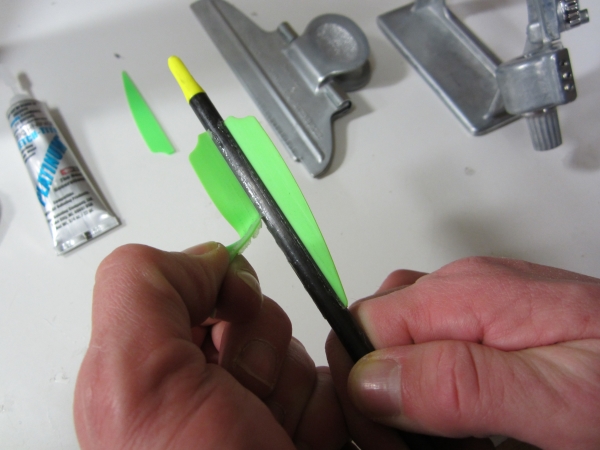There are many accessories you can add to your bow to help you shoot better. The first one to get is a sight. Bow sights on a recurve or compound bow will increase accuracy dramatically. Sights on a bow are a relatively new phenomenon. Thousands of years ago, longbows did not have sights and archers had to rely on experience and instinct to aim accurately. This is still possible today with a little practice, and is a good method for beginners to learn, but since sights do make the difference let’s take a look at how modern bow sights work.

Most bow sights designed for hunting consist of a set of three or more pins arranged in a vertical row mounted 3” or more from the riser. Usually the pins are set up in 10 yard increments with the first (top) pin for objects located 10 yards away, the second pin for objects 20 yards away, and the next pin for objects 30 yards away, and so on. Many archers will have between 3 and 7 pins in their bow sight to cover the usual range of distances that can be shot with a compound or recurve bow. These pin configurations are great for shooting in a variety of conditions, but they can be a bit difficult to use on targets at distances between the pins (such as 25 yards) and eventually the colored fiber-optic line in the middle of the pin will become brittle and need replacing.
Target archers who primarily shoot tournaments tend to opt for a sight with a single pin. The single pin system can be adjusted in very small increments by turning a knob to set it for whatever distance is required. These types of sights also have adjustment knobs for windage should you be shooting outdoors on a windy day. Single pin sights are great for tournament archers in particular on recurve bows, but their longer length and high price means they are a bit impractical when walking through the bush where they can be subject to bumps or rough conditions. Animals will also hear the “click click click” sound as you adjust your sight pins to the distance it is standing from you.
Tournament quality sights often can be equipped with a magnifying lens. Lenses are not allowed in some competition categories as they do make a huge difference when shooting. Lenses function very much like scopes on a rifle. When using a magnifier the image of the target appears bigger. This helps the archer to center the pin in the exact middle of the target area since it appears much larger and is easier to see. Lenses are available in different magnifications such as 2x, 4x, and even 8x. Unfortunately, lenses are not great for hunting as the glass can add reflections which will scare away animals. Lenses are also not always quick to change out should a different degree of magnification be required. Lenses are also quite breakable should they drop and hit hard ground.
Bows with a sight usually require a rear peep sight. A peep sight is a very small plastic or ceramic ring that is served into the bowstring on compound bows. A peep sight will often have a diameter of about 1/8”- and the narrower the better. The smaller the peep diameter the more accurate your shots will be.

A peep sight is used as another reference point and allows the archer to see the pins on the front bow sight through the string. Sights are properly adjusted when all pins can be seen through the peep without too much extra space around the front sights. An experienced bow technician can help you make adjustments when installing sights on your bow.
Once sights are installed on your bow, they have to be adjusted and set for the appropriate distance. This is usually not a fast procedure, but one that is necessary. Place yourself 10 yards away from a target and shoot six arrows at the centre. If the arrows land below the center then move your sight pin down. If the arrows land above center, move the sight up.
If the arrows land left of center move the sight left, and if they land right move the sight to the right. After moving the sight, shoot another 6 arrows as consistently as possible and the re-evaluate what adjustments must be made. Make small adjustments of about 1/16” each time you move the sight and using a mechanical pencil make a reference mark somewhere on the sight mount so you can tell how much it was moved and where your starting point was should you fumble a bit when making adjustments.
The archer’s golden rule for adjusting sights is “follow your arrows” which means move your sight in the direction that the arrows land on your target. Once you have your 10 yard pin set, move to 20 yards and go through the same procedure. Try very hard not to move your sight mount or pins after they are set up. Minor bumps or misalignments will cause big frustrations later.
Changes to a bow’s draw weight, arrow rest, or peep sight will all affect sight adjustment and mean the archer needs to sight in his or her bow again. Switching to arrows of a different weight will also affect the sight set up. Drastic changes in temperature and humidity can also affect the sight set up on a bow a bit.
Improve your accuracy when shooting and ensure that misses are a thing of the past by installing good quality sights on your bow. Most can be purchased for about $100 and up and will help you consistently hit the center of what you are aiming for.
Copyright 2019 Mike Wilson




